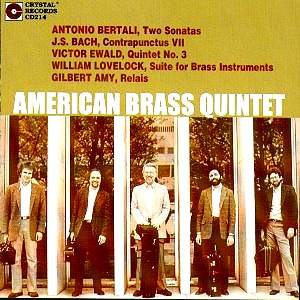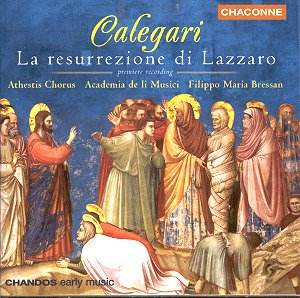 Composer: Johann Sebastian Bach
Composer: Johann Sebastian Bach
Works: The Art of Fugue: Contrapunctus VII; Antonio Bertali: Sonata No.2; Sonata No.4; Victor Ewald: Quintet No.3 in D flat major Op.7; William Lovelock: Suite for Brass Instruments (1968); Gilbert Amy: Relais (1967)
Performers: Raymond Mase and Chris Gekker (trumpets), David Wakefield (horn), Ronald Borror (tenor trombone), Robert Biddlecome (bass trombone)
Recording: Originally released on Crystal LP in 1984, remastered for CD
Label: Crystal Records
Johann Sebastian Bach’s oeuvre, particularly his contrapuntal works, invites not just performance but interpretation that reflects the intricate polyphony of his composition. This recording by the American Brass Quintet of Bach’s “Contrapunctus VII” from The Art of Fugue presents an intriguing study in the transposition of Bach’s complex textures into the sonorous realm of brass. The arrangement, while necessarily simplified for the instrumentation, retains the essence of Bach’s fugal dialogue, exploring the interplay between voices with impressive clarity.
The performance commences with a nod to the Baroque through two sonatas by Antonio Bertali. The ensemble’s execution is commendable, particularly in their articulation of the ornamentation that characterizes the style. Each performer demonstrates a keen sensitivity to the stylistic nuances of the period, yet a certain rigidity pervades the phrasing, which occasionally dampens the spontaneity that Baroque performance practice demands. The brass quintet’s timbral richness is particularly evident in Bertali’s second sonata, where the balance between brilliance and warmth is well managed, although a more liberal approach to dynamics could have enhanced the dramatic contrasts inherent in the music.
Victor Ewald’s Quintet No.3, a staple in the brass repertoire, contrasts sharply with Bach and Bertali. The American Brass Quintet navigates its Romantic idiom with aplomb, showcasing lyrical lines against a backdrop of rich harmonies. However, the recording quality here reveals some artifacts of its analogue origins, with a degree of resonance that sometimes blurs the clarity of the individual voices. This is particularly notable in the second movement, where the interplay between the trumpets and the horn is pivotal; a more defined sound could have elevated the thematic dialogue.
William Lovelock’s Suite for Brass Instruments emerges as the most cohesive work on the disc, blending traditional and modern elements with a sophistication that the ensemble executes expertly. The interplay here is vibrant, and the recording captures the ensemble’s dynamic range effectively, allowing for the distinct colors of the brass to shine through. Lovelock’s writing is both accessible and engaging, inviting the listener into a world where melodic lines and harmonic explorations coexist comfortably.
Gilbert Amy’s “Relais” introduces a jarring shift into the avant-garde, with extended techniques that require the musicians to explore beyond conventional brass sounds. This piece is a bold choice, yet it poses a challenge to the listener accustomed to the preceding works. The ensemble’s commitment to this modern idiom is commendable, although the chaotic nature of the piece may alienate those less familiar with contemporary practices. The technical demands placed on the performers—growling, singing while playing, and executing intricate rhythms—are met with skill, yet the overall cohesiveness of the performance suffers under the weight of its complexity.
The recording’s sound quality varies significantly across the works, with the more spacious acoustic of Amy’s piece detracting from the clarity achieved in Lovelock’s suite. The engineering choices seem inconsistent, leaving moments of brilliance overshadowed by muddled textures in more complex passages. The absence of clear documentation regarding the recording’s origins and engineering processes raises questions about the overall production quality, which could have benefitted from a more careful approach to sound balancing.
A lack of cohesion in the programming might leave listeners puzzled regarding the intended audience for this collection. The transitions from Baroque to modernism are stark, potentially alienating those who appreciate the fluidity of a more thematically unified recital. While the ensemble’s technical prowess is evident, the juxtaposition of styles requires a listener’s adaptability that may not be readily forthcoming.
The American Brass Quintet offers a commendable exploration of varied repertoires, though the execution sometimes falls short of the interpretative depth that these works deserve. Each piece shines in isolation, but the overall program lacks the seamlessness that characterizes the best chamber music performances. Despite these shortcomings, the recording underscores the ensemble’s versatility and dedication, marking it as a noteworthy, if uneven, addition to the brass repertoire.



